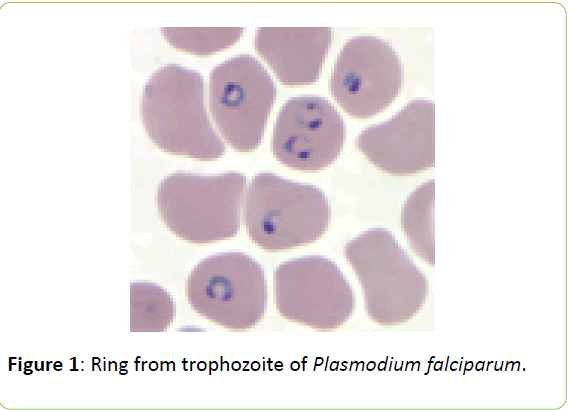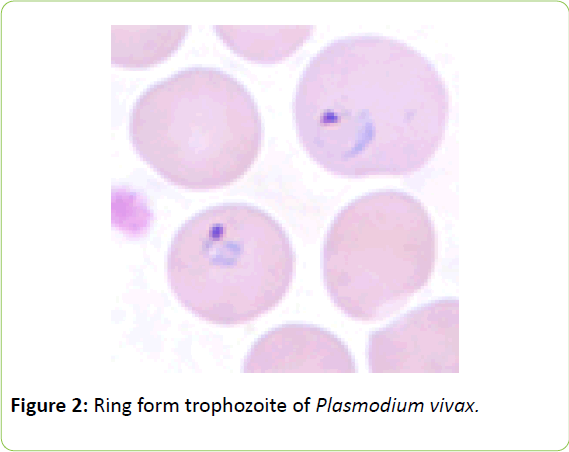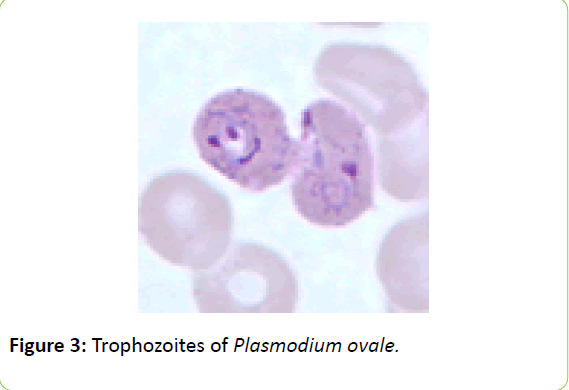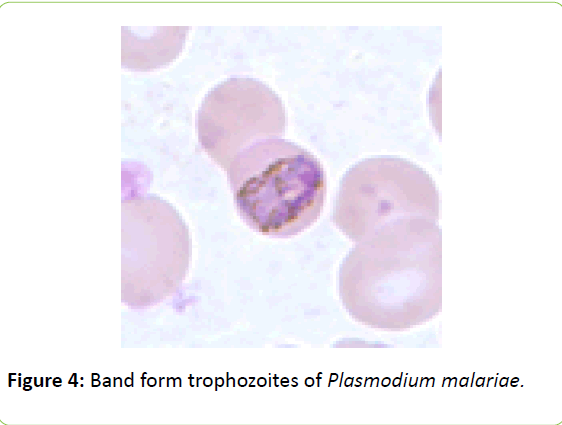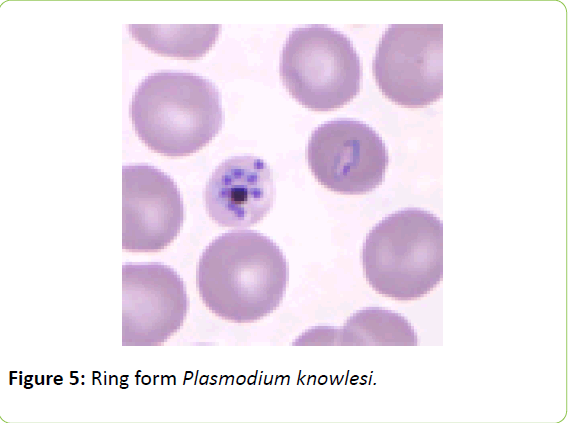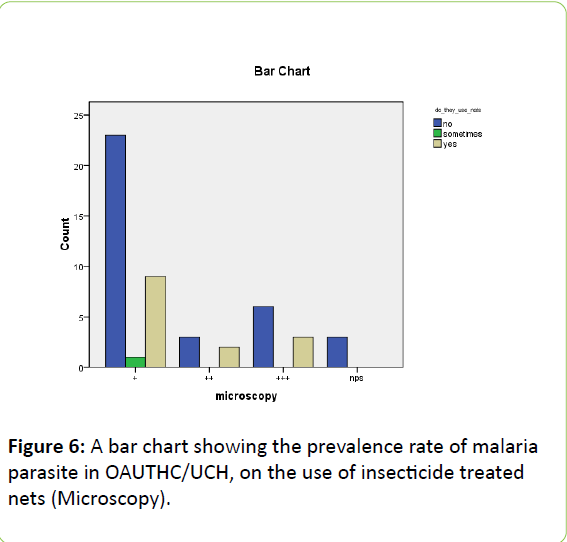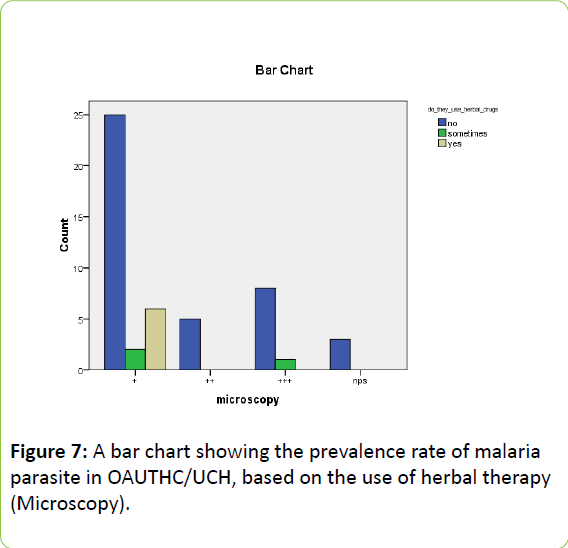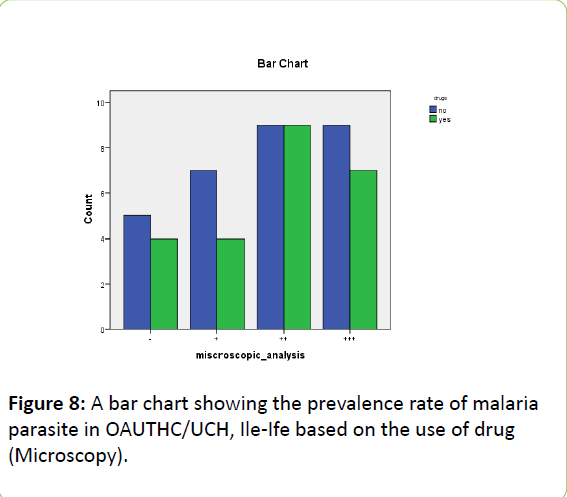Assessment of Plasmodium falciparum Case-based Surveillance at the Two Major University Teaching Hospital South Western Nigeria. A Comparative Study
Joseph Omololu-Aso*, Oluwaseun Oluwatoyin Omololu-Aso, Anthonia Olufunke Oluduro, Olapeju O Ajayi, Adekunle Adejuwon and Olutobi Olufunmilayo Otusanya
Department of Microbiology, Obafemi Awolowo University, Ile Ife, Osun State, Nigeria
- *Corresponding Author:
- Joseph Omololu-Aso
Department of Microbiology, Obafemi Awolowo University
Ile Ife, Osun Nigeria
Tel: +234 813 322 8723
E-mail: omololu-aso@oauife.edu.ng
Received date: February 11, 2017; Accepted date: April 13, 2017, Published date: April 15, 2017
Citation: Omololu-Aso J, Omololu-Aso OO, Oluduro AO, et al. (2017) Assessment of Plasmodium falciparum Case-based Surveillance at the two Major University Teaching Hospital South Western Nigeria… A Comparative Study. Br Biomed Bull, 5:300.
Copyright: © 2017 Omololu-Aso J, et al. This is an open-access article distributed under the terms of the Creative Commons Attribution License, which permits unrestricted use, distribution, and reproduction in any medium, provided the original author and source are credited.
Abstract
Guidelines focusing on National core indicators tools and methodology for monitoring and evaluating of Roll Back Malaria in Nigeria, in conformity with other countries in Africa region has been developed. Blood samples were collected from the fingers pricked of 200 patients (100 from each Hospital) who visited either of the two university teaching hospital (Obafemi Awolowo University (OAUTHC) and university college hospital (UCH), Nigeria). Malarial diagnostic testing was done where P. falciparum antigen were detected using Rapid Test Kit (Germany) agglutination assay followed by microscopy. All data generated was presented with Chi-square description Statistical Analysis using Statistical Package for Social Sciences (SPSS) version 15.0 for windows. Difference were shown to be statistically significant where p<0.05 in the Obafemi Awolowo University Teaching Hospital Complex, Ile-Ife (OAUTHC). Out of 100 patients studied in the OAUTHC, higher infection rate observed among age group <20 years (71.4%), followed by 20-30 years (18.2%) and less than 40 years (16.7%). The prevalence rate increased among male which constituted 23 (49.2%). Non-drug compliance individuals comprised of 7 (57.1%). At the UCH, 12 positive results were recorded out of 100 patients tested. Higher infection rate was observed among age group 20 (19%), 20-30 (13%), >40 (4.0%), the prevalence rate increased among female which contributed 9 (12.2%). Non-drug compliance individuals 27 (11.1%). To speed progress towards our global malaria goals, there is need for advocating new and improved malaria-fighting tools. Greater investments are needed in the development of new vector control interventions, improved diagnostics and more effective medicines.
Keywords
Plasmodium falciparum; Malaria; Children; Malaria diagnostic kit; Treatment
Introduction
Malaria is an infectious disease caused by the parasite Plasmodium spp and it usually transferred through the bite of an infected female anopheles mosquito while taking a blood meal [1]. It is a life-threatening, preventable, stable and treatable disease [2]. Plasmodium spp; Shown different Trophozoites in thin smears (Figures 1-5).
Over 500 million people suffer clinical malaria episodes annually caused by Plasmodium infection alone resulting in a conservative estimate of about one million deaths [3,4]. Malaria affects people particularly in tropical and sub-tropical regions of the world. It remains the most complex and overwhelming health problem facing humanity [5].
Malaria is endemic throughout Nigeria, with seasonal variation in different geographic zones of the country. More than 90% of the total population is at risk of malaria and about 50% of the population suffers at least one episode of malaria each year [6]. Beyond the impact on children and pregnant women, it affects the general population [6]. The disease is the commonest cause of outpatient attendance across all age groups with about 60% of clinical attendance due to malaria [7]. Malaria mortality rates are estimated to have declined by 62% globally between 2000 and 2015 and by 29% between 2010 and 2015 [8]. The rate of decline between 2010 and 2015 has been fastest in the WHO Western Pacific Region (58%) and the WHO South-East Asia Region (46%). In children aged under 5 years, malaria mortality rates are estimated to have fallen by 69% globally between 2000 and 2015 and by 35% globally between 2010 and 2015 [8].
In Africa, millions of people still lack access to the tools they need to prevent and treat malarial parasitaemia [9]. In many countries, progress is threatened by the rapid development and spread of mosquito resistance to insecticides. Anti-malarial drug resistance could also jeopardize recent gains [10].
Use of Insecticide Treated Nets (ITNs) and Indoors Residual Spraying (IRS)– are considered to have made a major contribution to the reduction in malaria burden since 2000, with ITNs estimated to account for 50% of the decline in parasite prevalence among children aged 2-10 years in sub-Saharan Africa between 2001 and 2015 [11].
In areas with high transmission of malaria, children under the age of 5 years are particularly susceptible to infection, illness and death; more than two thirds (70%) of all malaria deaths occur in this age group. Between 2010 and 2015, the underage-5 malaria death rate fell by 29% globally. However, malaria remains a major killer of children under the age of five years old, taking the life of a child every two minutes [12].
This study gives an insight on screened patient blood presented with Plasmodium falciparum malaria focusing on diverse approach of surveillance ranging from age differences, gender status, education, level of awareness and individuals therapeutic means of approach.
Materials and Methods
Samples collection
Blood samples were collected from the fingers pricked of 200 patients (100 from each Hospital) who visited either of the two- University Teaching Hospital (Obafemi Awolowo University (OAUTHC) and University College Hospital (UCH), Nigeria) between August-December 2010 for Malaria parasite test. Blood samples were collected from the sampled individuals using finger-pricking method after securing informed consent the hospital. The samples were collected aseptically by swabbing the finger to be pricked with 70% ethanol before collection. Plasmodium Rapid Test Kit Germany Global device was used in detection of the presence of P. falciparum. Microscopic analysis later conducted to determine the plasmodium species origin.
Administration of questionnaires
A structured questionnaire was used to elicit information from the patient. The questionnaire obtained information on age, sex, treatment, use of insecticides and insecticide treated nets, hygiene standards, use of herbal therapy and if they were currently on any medication. The questions in the questionnaire were asked from the patients and answers were given immediately. The answers to the questions were used to form a data.
Statistical analysis
All data generated was presented with Chi-square descriptive statistical analysis using Statistical Package for Social Sciences (SPSS) version 15.0 for windows to determine any significant relationship between: age, sex, treatment, use of insecticides and insecticide treated nets, hygiene standards, use of herbal therapy or any other medication. Difference were shown to be statistically significant where p<0.05.
Results
Out of 100 patients studied in the OAUTHC, higher infection rate observed among age group <20 years (71.4%), followed by 20-30 years (18.2%) and less than 40 years (16.7%). The prevalence rate increased among male which constituted 23 (49.2%), compared with female subjects 15 (31.3%), Uneducated 29 (62.1%), Educated 20 (10%), Semi-educated 43 (37.2%). Non-experience 8 (25%), Non-drug compliance individuals 7 (57.1%) Patients on malaria medication 70 (38.6), Local herb users 8 (25%). Also, 84 (38.1%) showed higher level of awareness to P. falciparum while non-awareness 7 (42.9%), Indifference, 9 (33.3%). Frequently infected individuals 22 (40.9%), Non-frequent infected 30 (36.7%). Rarely infected 36 (36.17%), Non-response 12 (41.7%). Patients utilized other means of protection, 22 (31.8%), Insecticides, 36 (55.6%), Mosquito net 40 (22.5%).
At the UCH, 12 positive results were recorded out of 100 patients tested. Higher infection rate was observed among age group 20 (19%), 20-30 (13%), >40 (4.0%), the prevalence rate increased among female which contributed 9 (12.2%), compared with male subjects which constituted 3 (11.5%). Semi-educated 36 (25%), Uneducated 21 (4.8%), Educated 43 (4.7%). Patients on malaria medication showed 65 (13.8%), Non-drug compliance individuals 27 (11.1%), Local-drugs/herbs users showed no attack as illustrated in Figure 2.
Insecticides mean of protection constituted 39 (15.4%), Mosquito net 18 (11.1%), Patients utilized other means of protection 43 (9.3%), Level of awareness 84 (38.1%), Nonawareness 7 (42.9%), Indifference 9 (33.3%). Frequent infected individuals showed 10 (20%), Non-frequent 54 (14.8%) and rarely infected constituted 36 (5.6%).
Discussion
Among total 100 individuals tested for malaria based on gender at both University Teaching Hospitals, Plasmodium falciparum was found to be more prevalent in Male participants at OAUTHC 23 (49.2%) than in Females individuals observed at 9 (12.2%). Although this is contrary to the survey carried out by [13] in which individuals tested for malaria based on gender using two methods (RDT and Microscopy), Plasmodium falciparum was found to be more prevalent in females (75%) than in males (68.8%) p<0.05
For 200 total individuals tested for the presence of malaria based on age at both Hospitals in Nigeria, Plasmodium falciparum was found to be more prevalent in individuals within the age range <20 p<0.05 at OAUTHC compared to the others which was also in support of the study conducted by [14]. It is worth nothing, that at UCH study centers, >20-30 showed high prevalence of P. falciparum infection. Adult participants majorly pregnant women visiting the antenatal clinic are likely susceptible. This must have been due to their low immunity against malaria and number of child births they have had earlier because immunity increases with age and childbirths. Similar reports have been reported by other authors in Gabon and eastern Sudan where malaria prevalence was observed to decrease as age increases [15].
Our findings of 36(55.6%); 39(15.4%) of Insecticides means of protection against mosquitoes bite as reported from both clinical institutions p<0.05 respectively (Figure 6) corroborate the survey findings at Enugu [16] proves that women who used the insecticide treated nets are significantly less likely to have acute malaria, anemia and babies with low birth weight than women who did not use insecticide treatment nets. This result could have been due to a lot of reasons such as the right use of mosquito nets, which might have required chemical washing, also some might have claimed to use it and might have not been using it effectively and constantly, and the last reason might have been due to exposure to the vector (mosquito) from the environment probably, before sleeping under the nets, because the mosquito nets will only be effective when the individual is staying under it.
Based on the use of herbs; individuals patient adopted this protective measures at both hospital centers showed little or no attack (Figure 7). In OAUTHC 8 (25%) were on Local herbs regimen whereas at UCH, all herbs compliant treatment showed no malaria attack p<0.05 and this commemorates the research work of [17] in Osogbo, which made it clear that the use of herbs by pregnant women as both preventive and antimalarial agents was found potent with which Plasmodium falciparum were 100% susceptible. In other words, the use of herbs as a cure against malaria is also very effective although Government can educate those involved in the practice regarding the normal dose taken, so as not to make it excessive; it is also advisable that the food and drug agencies of Nigeria should do more research in local herbs in order to develop new and more effective drug for prevention and control of malaria.
70 (38.6%) and 65 (13.8%) findings in both OAUTHC and UCH p <0.05 (Figure 8). This report is consistent with other workers in African countries which found intermitted preventive treatment to be protective against malaria in pregnancy Falade et al. and from other authors [18]. It was reported that use of nonrecommended malaria chemo prophylactic medication such as Chloroquine did not significantly reduce malaria infection among patients.
Recommendation
Development of adequate information on P. falciparum infection risks is highly needed in the studied tertiary hospitals. Novel technologies to prevent, monitor, diagnose and efficient treatment of malaria mostly among lower age group must be adopted through Local and National Malaria Control Program.
Aknowledgement
The Joint Authors of this research findings would like to thank American Society of Parasitology (ASP) Conference Organizers to have awarded an opportunity to the Corresponding Author Dr. J. Omololu-Aso who presented this paper in the meeting Held on 13-16th July 2012, at Omni Richmond Virginia, USA.
References
- EzugboNwobi IK, Obiukwu MO, Umeanato PU, Egbuche CM (2011) Prevalence of malaria parasites among nnmadiazikwe university students and anti-malaria drug use. African Research Review 5: 135-144.
- Kliegman MR, Stanton FB, St Geme WJ, Schor FN, Behrman ER (2011) Malaria in: nelson textbook of peadiatrics, 19th edition, Philadelphia. Elsevier Saunders 1198-1207.
- Guinovart C, Navia MM, Tanner M, Alonso PL (2006) Malaria: burden of disease. Current molecular medicine. Malaria Journal Microbiology 5: 113-118.
- Vaughan A M, Aly ASI, Kappe SHI (2008) Malaria parasite pre-erythrocytic stage infection: gliding and hiding. Cell Host and Microbe 4: 209-218.
- Ekwunife CA, Ozumba NA, Eneanya CI, Nwaorgu OC (2011) Malaria infection among blood donors in onitsha urban, southeast nigeria. Sierra Leone Journal of Biomedical Research 3: 21-26.
- Umar RA (2002) Relationship between level of parasitaemia and anaemia in children with malaria. Sahel Medical Journal 5: 58-62.
- Fawole IO, Onadeko MO (2000) Knowledge and management of malaria in under five children by primary health care workers in Ibadan south-east local government area. Nigeria Postgradraduate Medical journal 8: 1-6.
- Cairns M, Roca Feltrer A, Garske T, Wilson AL, Diallo D, et al. (2012) Estimating the potential public health impact of seasonal malaria chemoprevention in african children. Nature Communications 3: 881.
- Bhatt S, Weiss DJ, Cameron E, Bisanzio D, Mappin B et al. (2015) The effect of malaria control on Plasmodium falciparum in Africa between 2000 and 2015. Nature 526: 207-211.
- Pluess B, Tanser FC, Lengeler C, Sharp BL (2016) Indoor residual spraying for preventing malaria. Cochrane Database Systematic Reviews: CD006657.
- Lengeler C (2015) Insecticide-treated bed nets and curtains for preventing malaria. Cochrane Database Systematic Reviews: CD000363.
- Eisele TP, Larsen D, Steketee RW (2010) Protective efficacy of interventions for preventing malaria mortality in children in Plasmodium falciparum endemic areas. International Journal of Epidemiology 39: i88-i101.
- Afolabi OJ, Simon Oke IA, Sorungbe AA, Alao OO (2015) Prevalence of malaria among biological science students in federal university of technology akure, Nigeria. Natural Science 13: 6-12.
- Murawala SM, Chudasama V, Vegad M (2015) Prevalence of mosquito-borne Plasmodium infection in patients attending fever clinic in a tertiary-care teaching hospital, western India. International Journal of Medical Science and Public Health 4: 1598-1601.
- Marielle KBA, Denisa EIC, Modeste MM, Eric K, Pierre BM, et al. (2003) Prevalence of Plasmodium falciparum infection in pregnant women in Gabon. Malaria Journal 2: 1-17.
- Ugwu EO, Ezechukwu PC, Obi SN, Ugwu AO, Okeke TC (2012) Utilization of insecticide treated nets among pregnant women in Enugu, Southern eastern Nigeria. Nigeria Journal clinical Practices 16: 292-296.
- Adefioye OA, Adeyeba OA, Hassan WO, Oyeniran OA (2007) Prevalence of malaria parasite infection among pregnant women in osogbo, southwest, nigeria. American-Eurasian Journal of Scientific Research 2: 43-45.
- Chimere OA, Wellington AO (2013) Factors associated with risk of malaria infection among pregnant women in Lagos, Nigeria. Infectious Diseases of Poverty 2: 19.
Open Access Journals
- Aquaculture & Veterinary Science
- Chemistry & Chemical Sciences
- Clinical Sciences
- Engineering
- General Science
- Genetics & Molecular Biology
- Health Care & Nursing
- Immunology & Microbiology
- Materials Science
- Mathematics & Physics
- Medical Sciences
- Neurology & Psychiatry
- Oncology & Cancer Science
- Pharmaceutical Sciences
